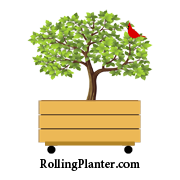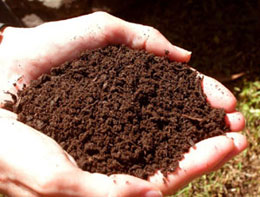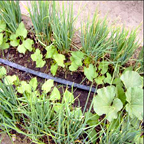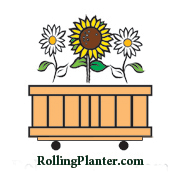![]()


- Try to pull out most persistent weeds, such as nut grass, Bermuda grass, or crab grass before you start. Dig down with a hand tool to get their roots as much as you can. For very poor, heavily compacted soil conditions this can open up the top few inches without completely destroying any soil structure. If the area is thick with the above weeds, read about weed control below.
- You will want to add living material to your existing soil. For example, add a layer (a few inches) of compost or worm castings. Some garden writers say to mix the organic matter into the top 4"-6" of soil, but the latest method is to put it on the top of your soil, which is also less work. Actually tilling and double digging can damage the soil structure and kill some/or most of the beneficial microorganisms (micro herd) in your soil. (see below)

- If you want to feed a very poor soil with more than quality compost or worm castings, you could add other organic amendments that nourish the soil microbes slowly for steady growth. Examples are blood meal, bone meal, alfalfa meal, cottonseed meal, fish meal, or kelp meal. One or more of these amendments could be mixed in with the compost layer. These should be added very sparingly. Most of the time they are not necessary and if too much is used they can be detrimental to the soil biology.
- Mulching the soil with wood chips/shreds, partially composted leaves and other woody materials helps cool the soil, as well as leaving a slow release source of food for the microorganisms (micro herd).
![]()
Choose the best type of watering system for your needs, as well as for the type of plants you want to grow.
You can set up a drip system of watering with the little in line drip/sprayers and/or laser drip lines. Another option is to use the 1/4 inch "spaghetti" tubing soaker hoses. A third option is to use the wider (2 sizes available) soaker hoses that are similar to regular hose diameters and look like they are made from car tires.
 A traditional sprinkler system can be converted to provide water for a drip irrigation system. Garden stores can help with more information; it is not difficult to do yourself. Many timers have wonderful capabilities to set different run times. Some control modules has 3 or more separate and independent programs, with 3 daily start times per program. This allows some areas to be watered once a week, or twice a month, and still be able to water some areas twice a week. They have made it easy to use water-wise techniques in your gardens, save water and have healthy plants.
A traditional sprinkler system can be converted to provide water for a drip irrigation system. Garden stores can help with more information; it is not difficult to do yourself. Many timers have wonderful capabilities to set different run times. Some control modules has 3 or more separate and independent programs, with 3 daily start times per program. This allows some areas to be watered once a week, or twice a month, and still be able to water some areas twice a week. They have made it easy to use water-wise techniques in your gardens, save water and have healthy plants.
Most plants do not like overhead sprinklers (except ferns and plants that like high humidity). An overhead sprinkler system wastes more water than drip systems. You can hand water, but this does take being mindful of a regular watering schedule. The positive side of hand watering is that during this time you can spot and pull new weeds emerging, or a plant that needs a stick for support, and the general health and growth of your garden.
![]()
One important concept to remember about keeping soil healthy is that we need to put back what we take out of our soil. This means leaving the leaves, twigs, etc. from a tree to mulch the area under the tree. This way, the nutrients that the tree took from the soil are returned and this keeps the soil nutrients balanced. The same goes for vegetable or fruit gardens. When the tomato vines die at the end of the year, the stem is broken from the roots and the roots are left in the soil to feed the micro herd that which was taken from the soil to grow the tomato. The dried upper plant parts can be broken up and used for mulch on this bed along with other mulch. This process keeps the soil healthy and alive with active microorganisms, as bacteria, fungi, protozoa, nematodes and more - all part of the Micro herd.
Some people grow what is called a cover crop on a bed when it is not being used to grow food. Cover crops can put back many nutrients which could be depleted from "heavy eater" crops. Your "gardener's gold" or commonly called compost, is the most perfect support for keeping your soil community/micro herd alive and healthy. Notice the micro herd in the soil. They are diverse organisms all doing their job making healthy soil/humus. Our job is to keep the organisms supplied with raw food and to keep them alive and well in our soil. The underlying principle is that good soil contains copious amounts of organic matter to feed the soil organisms which, in turn, excrete the nutrients that plants need, in a form that plant roots can take up. All these organisms eat organic matter or consume other organisms. As they digest this material, nutrients are converted from one form to another (in the same way that the food we eat is changed by our digestive enzymes). The organisms retain what they need for their own growth and reproduction; what they excrete contains nutrients now in a form that plant roots can take up. Besides opening up and softening the soil, organic matter is essential to form a sponge in the soil which will trap water from rain or irrigation and prevent it from quickly percolating down out of reach. At the same time it retains any soluble food materials which are being carried down by the water.
micro herd in the soil. They are diverse organisms all doing their job making healthy soil/humus. Our job is to keep the organisms supplied with raw food and to keep them alive and well in our soil. The underlying principle is that good soil contains copious amounts of organic matter to feed the soil organisms which, in turn, excrete the nutrients that plants need, in a form that plant roots can take up. All these organisms eat organic matter or consume other organisms. As they digest this material, nutrients are converted from one form to another (in the same way that the food we eat is changed by our digestive enzymes). The organisms retain what they need for their own growth and reproduction; what they excrete contains nutrients now in a form that plant roots can take up. Besides opening up and softening the soil, organic matter is essential to form a sponge in the soil which will trap water from rain or irrigation and prevent it from quickly percolating down out of reach. At the same time it retains any soluble food materials which are being carried down by the water.
THINGS TO AVOID:
Chemical fertilizers negatively impact the soil food web by killing off entire portions of it. Note what table salt does to a slug. Fertilizers are salts; they suck the water out of the bacteria, fungi, protozoa and nematodes in the soil. Since these microbes are at the very foundation of the soil food web nutrient system, you have to keep adding fertilizer once you start using it regularly. The microorganisms are missing and not there to do their job of feeding the plants. Once the microorganisms die, the other members of the micro herd will leave to. For example, earthworms, will leave when they lack food and are irritated by the synthetic nitrates in soluble nitrogen fertilizers. All of this impacts the nutrition, as well as the structure of the soil. Watering becomes a problem because the sponge has broken down and pests and diseases are able to establish themselves. Gardening like this is a lot of work and you are not gaining the nutrition you were hoping to get. If the salt-based chemical fertilizers don’t kill the micro herd, then rototilling will. This process breaks up fungal hyphae, kills worms, and rips and crushes arthropods. It destroys soil structure/soil sponge and eventually saps soil of necessary air. Air pollution, pesticides, fungicides and herbicides also kill off important members of the micro herd/food web community or cause them to find a better place to live. The soil stops functioning.

![]()
RollingPlanter.com
84824 Cloverdale Road
Creswell, OR 97426
telephone: 805.643.5902
e-mail: ![]()
